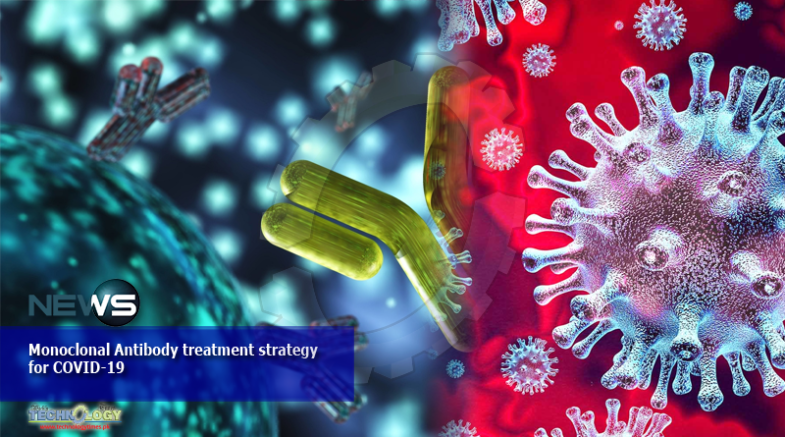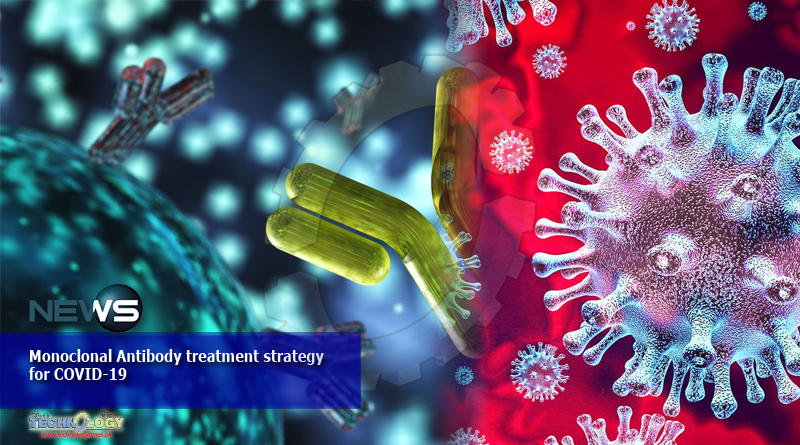Monoclonal Antibody gives direction for the treatment of Coovid-19 as advance studies reveal that monoclonal antibody (CR3022) is very efficient against SARS-CoV-2.

Notwithstanding, epitope of CR3022 does not cover attachment region of ACE2 against SARS-CoV-2. Thus, CR3022 monoclonal antibody gives another direction towards treatment of Covid-19.
Covid-19 belongs to Coronaviridae family and single stranded RNA virus that is related with upper respiratory tract infection. In the end December of 2019, Chinese government informed to WHO about a number of cases of pneumonitis with mysterious aetiology.
In the beginning more than 50 people were infected who have close relation with the seafood market in Wuhan China. Bats, snake, frog, birds and rabbits were usually sold in the Hunan seafood market Wuhan.
On January 2020, the National Health Commission of China declared it as viral pneumonia. Then they take sample from the patients and performed the sequence-based analysis and diagnose the virus as coronavirus.
In addition, the genetic progression was also identified as viral disorder. At first, it was thought that the people who are tainted with this virus may have visited seafood merchandise where the live animals and birds were traded.
Anyhow, advance analysis showed that some individuals were being suffered from this infection but they have travel history regarding seafood market Wuhan.
This perception suggested a human to the human transmission of coronavirus, which was later on spread all over the world. The man to the man transmission of coronavirus appeared because of direct in touch with infected person manifested to sternutation, pyrexia, coughing and respiratory secretion. These droplets can enter through nose, eyes, and mouth towards lungs for proliferation.
Incubation period is time between first exposure to infection and appearance of symptoms. Correct assessment regarding the incubation period will be helpful for prophylaxis and control.
Nevertheless, there is an opaque image about incubation time that symptoms will appear in as few as 2 to 14 days in infected patients.
However, we have noticed that suspected patient after 15 days of self-isolation does not show any symptoms but symptoms appeared after 28days.
These types of rare cases can be seen in healthy adult wherein the virus may suppressed due to strong immune system take time to show the sign and symptoms.
So if a person travels in the area of outbreak of coronavirus must have to quarantine for at least 14-28 days to avoid its transmission. This estimation would be more precise if we have more data regarding the patient infected with COVID-19.
Original chain of infection data is required for determination of accurate incubation time period. There is critical point some person that are infected with virus are asymptomatic during incubation period but they act as carrier of coronavirus transmission.
Sign and symptoms of patient infected with coronavirus have following symptoms high grade fever, dry cough, myalgia, diarrhea, sore throat, dyspnea, pneumonia in severe cases, continuous chest pain, rhinorrhea, Lost senses of taste and smell.
Treatment strategies for Covid-19 are as follows
Antiviral therapy
Interferon
Interferon (IFN-α, IFN-β) plays a vital role in anti-viral immunity. IFN-α has protective role in SARS-CoV-2 infected person by pointed interfering with viral replication and trigger the innate and adaptive immunity.
In vitro researches revealed that replication of SARS-CoV-2 inhibited by IFN-α. It has been believed that monkey can be treated from SARS-CoV with help of IFN-α. Therefore, IFN-α will be prove very beneficial for treatment of COVID-19.
Protease inhibitor
Lopinavir was used in treating HIV infected patient that act by interfering the duplication and mash-up of virus directing to the formation of incomplete virus fragments.
In case of COVID-19 lopinavir can stick with endoprotenase C30 of coronavirus and may shows its anti-viral activity by hindering poly-peptide fusion of COVID-19.
Additionally, some clinical revealed the fact that alone or combination therapy of lopinavir and anti-viral drug was approve very fruitful in SARS-CoV and MERS infected patients. Likewise lopinavir have beneficial effect in COVID-19.
Nucleosides analogue
Ribavirin is a nucleoside analogue drug and inhibits the RNA and DNA duplication by repressing the inosine monophosphate dehydrogenase activity which is essential for production of guanosine triphosphate. Ribavirin was utilized in SARS outbreak in HONGKONG with or without synchronous use of other steroids.
Thus, it would prove another option for treatment of COVID-19. Chloroquine is another drug that has been use in malarial and auto-immune disorder. Now researches show that chloroquine has broader anti-viral spectrum and showing desirable outcome in COVID-19.
Cellular therapy
Natural killer cells are principal component of immune cells. Human natural killer cells stimulate the activity of immunoglobulin-dependent cytotoxicity results in lysis of antibody coated virus infected cells.
In SARS-CoV natural killer cells can exhibit anti-viral activity by the action of immunoglobulin-dependent cytotoxicity. Blood of birth-cord is a rich inventor of natural killer cells. However, natural killer cells therapy is a useful tool for prevention or treating COVID-19 pneumonia.
Mesenchymal stem cells (MSCs)
MSCs have powerful immune-modulatory potential and lessen inflammatory responses. Placenta and blood of funiculus (birth cord) are rich inventor of MSCs. MSCs can suppress the pro-inflammatory cytokine secretion and intrusion of immune cells to lung mass to treat severe pulmonary slash and non-cardiogenic pulmonary edema.
However, MSC has addition effect to reduce lung fibrosis and in tissue regeneration. Thus, it will prove beneficial for reducing the symptoms of ADRS and severe pulmonary slash in severe COVID-19 patients.
Immunotherapy
Plasma therapy
Convalescent plasma therapy is the technique in which antiviral immune protein ( IgM, IgE, IgG etc.) can be taken from the blood (plasma) of recovered patient. This technique is very useful in various disorders for example influenza, poliomyelitis and Ebola.
Furthermore, protection can be attain against SARS-Cov by utilizing recovered patient plasma. It has been noted that patient infected with SARS-CoV in Hong Kong shows clinical advantages with convalescent plasma in the primary stage of the disorder after 24hr of plasma transfusion.
Thus, this technique gives another way to treat the pandemic of coronavirus. However, at the end April China has recovered his last 77 years old patient by transfusion of convalescent plasma in Wuhan.
Monoclonal antibodies
Monoclonal antibodies against SARS-CoV work by targeting the enveloped spike protein so that their entry into host cell is prohibited. The key target for monoclonal antibodies is receptor binding domain of S protein. The monoclonal antibodies (CR3014 and CR3022) were connect to SARS-CoV receptor binding domain non-competitively and counteract virus in collaborative way.
Epitope of CR3022 does not cover attachment region of ACE2 against SARS-CoV-2. Thus, CR3022 monoclonal antibody gives another direction towards treatment of Covid-19.
This article is jointly written by Maria Daud Wafa Majeed , Muhammad Naeem Faisal , Mahnoor syed, and Ambreen Mahmood Awan Institute of Pharmacy, Physiology and Pharmacology, University of Agriculture, Faisalabad, Pakistan
